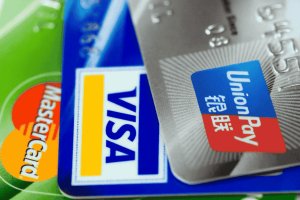Many people focus on big expenses—rent, groceries, and bills—when managing their finances. However, hidden costs in everyday life can silently drain your money without you realizing it. These unnoticed expenses can add up over time, making it harder to save and reach financial goals. Small fees, impulse purchases, and subscriptions you forgot to cancel are just a few examples of how money slips away unnoticed.
Understanding where these costs come from and how to minimize them can help you take control of your budget and avoid financial leaks. By identifying patterns in your spending, you can make smarter choices and allocate your money more efficiently. In this guide, we’ll reveal the most common hidden costs and provide practical strategies to keep your finances in check, ensuring you stay on track toward financial stability and long-term savings.
1. Subscription Services and Auto-Renewals

Subscription-based services are convenient, but they can accumulate into a significant financial burden.
Common Subscription Costs:
- Streaming platforms (Netflix, Disney+, Spotify, etc.).
- Gym memberships that go unused.
- Software or app subscriptions.
- Magazine and newspaper digital subscriptions.
- Online storage services (Google Drive, iCloud, Dropbox).
How to Cut Costs:
- Review bank statements regularly to find subscriptions you no longer use.
- Cancel unused memberships—if you haven’t used it in months, you don’t need it.
- Switch to annual billing for services you use frequently—this often provides a discount.
- Use a subscription tracker app to monitor and manage renewals.
2. Bank Fees and Financial Charges
Banks and financial institutions often charge hidden fees that go unnoticed until they accumulate.
Hidden Bank Fees to Watch Out For:
- Monthly maintenance fees on checking accounts.
- Overdraft fees for insufficient funds.
- ATM withdrawal fees for using out-of-network machines.
- Foreign transaction fees when traveling abroad.
- Late payment penalties on credit cards.
How to Avoid Them:
- Choose a bank with no monthly fees or minimum balance requirements.
- Set up alerts for low balances to avoid overdraft charges.
- Use ATMs within your bank’s network or withdraw cash strategically.
- Pay credit card bills on time to avoid penalties.
3. Energy Vampires: The Cost of Unused Electronics
Did you know that plugged-in electronics still consume electricity even when turned off? This is known as phantom energy drain.
Common Energy-Draining Devices:
- Chargers left plugged in (phones, laptops, tablets).
- TVs and gaming consoles on standby mode.
- Microwaves and coffee makers with digital displays.
- Desktop computers and printers in sleep mode.
How to Reduce Energy Waste:
- Unplug devices when not in use or use power strips with switches.
- Invest in smart plugs that cut off power when devices are idle.
- Turn off electronics completely instead of using sleep mode.
- Use energy-efficient appliances that reduce power consumption.
4. Eating Out and Takeout Fees
Ordering food or dining out occasionally is fine, but it’s easy to underestimate the cost of frequent restaurant visits and delivery fees.
Hidden Costs of Eating Out:
- Service charges and tipping costs.
- Delivery and platform fees (GrabFood, Foodpanda, etc.).
- Marked-up prices on delivery apps vs. in-store.
- Extra drink or side purchases adding up.
How to Save on Food Costs:
- Limit takeout to special occasions and cook at home more often.
- Plan meals in advance to reduce last-minute food spending.
- Use restaurant loyalty programs for discounts.
- Pick up orders instead of using delivery services to avoid extra charges.
5. Impulse Purchases and Retail Traps

Retailers use psychological pricing strategies to encourage impulse spending, often making people buy things they don’t really need.
How Stores Encourage Overspending:
- Sales promotions like “Buy One, Get One Free” push unnecessary purchases.
- Limited-time offers create a sense of urgency.
- Checkout lane temptations (candy, magazines, small gadgets).
- Free shipping thresholds making you spend more to qualify.
How to Avoid Impulse Buying:
- Stick to a shopping list and avoid browsing unnecessary sections.
- Use the 24-hour rule before making non-essential purchases.
- Unsubscribe from retailer emails to resist temptations.
- Set a spending limit for online shopping.
6. Transportation and Hidden Car Costs
Car ownership comes with unexpected expenses beyond fuel and insurance.
Hidden Transportation Costs:
- Maintenance and repairs—regular servicing, tire replacements, oil changes.
- Parking fees—especially in urban areas.
- Toll charges that add up over time.
- Car depreciation, which reduces resale value.
How to Reduce Costs:
- Use public transportation when possible.
- Carpool or ride-share to split costs.
- Regularly maintain your vehicle to avoid expensive repairs later.
- Compare insurance policies annually for better rates.
7. Hidden Travel Expenses
Traveling can be more expensive than expected due to hidden fees and unexpected costs.
Common Travel-Related Hidden Costs:
- Baggage fees on budget airlines.
- Resort fees that aren’t included in the advertised price.
- Tourist taxes at hotels or local attractions.
- Roaming charges for mobile data.
How to Save Money While Traveling:
- Book flights with free carry-on allowances.
- Check hotel fees before booking.
- Use local SIM cards or WiFi to avoid roaming fees.
- Avoid dining in tourist areas, where prices are inflated.
8. Missed Discounts and Unused Benefits
Many people overpay for services or miss out on potential savings simply because they don’t take advantage of available discounts.
Common Missed Savings Opportunities:
- Employer benefits like discounted gym memberships or wellness programs.
- Student, military, or senior discounts that go unclaimed.
- Cashback rewards on credit cards that remain unused.
- Coupons and promo codes that could lower grocery or retail costs.
How to Take Advantage:
- Always ask about discounts before making a purchase.
- Use cashback apps to earn money back on everyday purchases.
- Check credit card benefits for hidden perks.
- Join loyalty programs for frequent savings.
Conclusion

Hidden costs can eat away at your finances without you even realizing it. By being aware of these sneaky expenses and making small adjustments, you can free up more money for savings and investments.
Key Takeaways:
- Regularly review your subscriptions and bank statements for unnecessary charges.
- Be mindful of phantom energy waste and turn off unused electronics.
- Limit takeout and impulse purchases to avoid overspending.
- Plan ahead for transportation and travel costs to prevent surprise expenses.
- Take advantage of discounts and cashback opportunities.
By cutting down on these hidden expenses, you can improve your financial health without making major lifestyle sacrifices.









